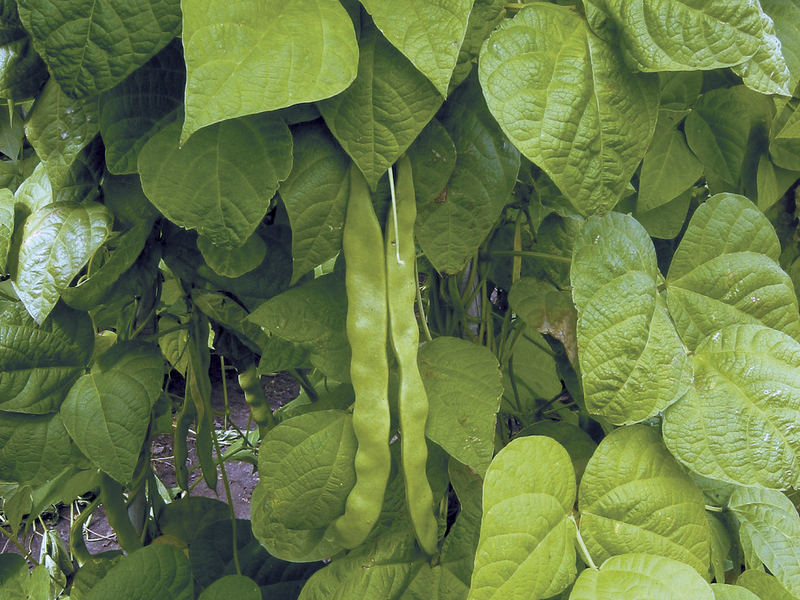In the cold waters of the Atlantic Ocean is a virtual river of warm water that travels slowly northward at just four miles per hour. This Gulf Stream brings nearly four billion cubic feet of tropically warmed water per second up to the shores of Western Scotland and Cornwall. Once in a while “magic” beans of an exotic nature will wash up. These New World beans were thought to have powers to help in childbirth, ward off evil spirits or just bring luck.
Here on shore, bush beans (Phaseolus vulgaris) are a good crop to plant in the warm days of summer.
Unlike its close relative the pea, bush beans need warm temperatures to grow. Since they mature at a rapid 45 to 60 days from planting, they can be successfully sown in the July garden and have a harvest by Autumn.
Because they are crisp and snap in half easily, bush beans are often called snap beans. There are green, yellow and even purple snap beans.
Bush snap beans do not need poles for support, and as a bonus most of the beans mature at once or over a short period of time, whereas pole beans often mature a few beans each week until frost.
Snap beans are ready for picking in just 45 to 60 days of planting. You can keep a continuous harvest of green beans by planting every two to four weeks until August.
Many snap bean pods grow a tough, fibrous strand along the length of the pod. This fiber or string is usually pulled out or removed before cooking. In 1894 Calvin Keeney of Le Roy, N.Y. developed a stringless string bean. Today most green beans are stringless.
Some good varieties of green beans are Derby, Provider, Bush Blue Lake and Tendercrop. For yellow bush beans, try Pencilpod Golden Wax and Cherokee Wax beans. The purple podded snap beans such as Royal Purple Burgundy, like all purple podded beans, turn green when cooked.
Plant bush bean seeds one inch deep, two to four inches apart in rows 18 to 24 inches apart. Beans grow best in slightly acidic soil with a pH of 6 to 6.8.
For best results treat your beans seeds to an inoculant of beneficial bacteria that encourages formation of high-nitrogen nodules on bean plant roots. These powdered inoculant are easy to apply by simply stirring with the bean seeds before sowing.
Because beans have shallow roots you may want to mulch control weeds and hold in soil moisture.
Be careful when hoeing near bean plants because its so easy to cut into their roots.
Pick your green beans when they are crisp, firm, and full sized, but before the seeds are very big. Older beans will have hard seeds that might not soften enough with cooking.
Since beans are susceptible to bacterial blight, try not to work the plants when they are wet with dew or after a rain.
Bean stalks and branches are quite brittle so care must be taken not to damage the plants when picking the beans. By keeping beans picked you can encourage new flowers and a longer harvest.
The scientific name Phaseolus derives from a word meaning boat because the boatlike pods. So plant bush snap beans now for a late summer early fall harvest. Gulf Stream or not, you don’t want to miss the boat.



















































